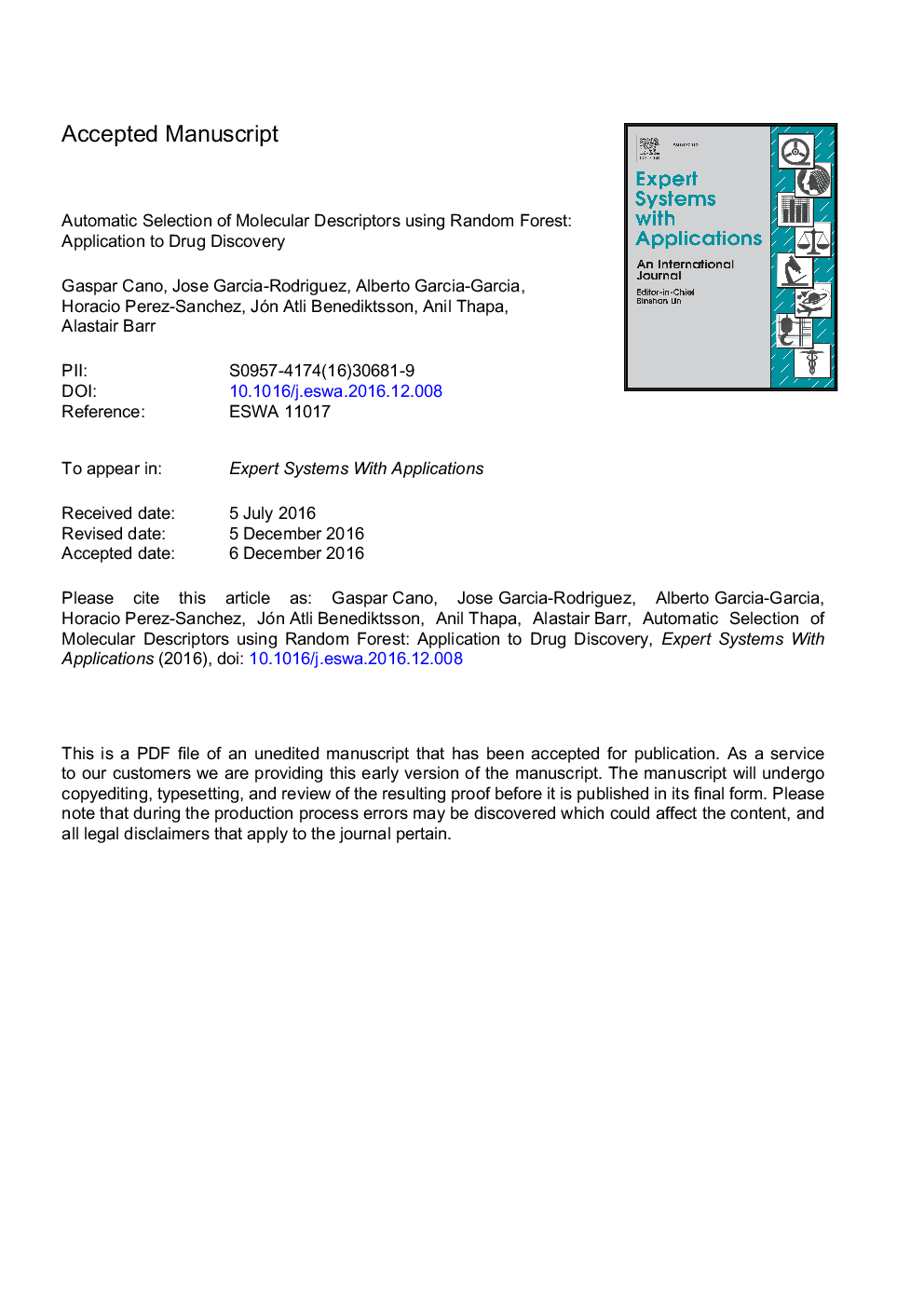ترجمه فارسی عنوان مقاله
انتخاب خودکار توصیفگرهای مولکولی با استفاده از جنگل تصادفی: کاربرد در کشف دارو
عنوان انگلیسی
Automatic selection of molecular descriptors using random forest: Application to drug discovery
| کد مقاله | سال انتشار | تعداد صفحات مقاله انگلیسی |
|---|---|---|
| 150645 | 2017 | 27 صفحه PDF |
منبع

Publisher : Elsevier - Science Direct (الزویر - ساینس دایرکت)
Journal : Expert Systems with Applications, Volume 72, 15 April 2017, Pages 151-159
ترجمه کلمات کلیدی
جنگل تصادفی کشف مواد مخدر، توصیفگرهای مولکولی، شیمی محاسباتی،
کلمات کلیدی انگلیسی
Random forest; Drug discovery; Molecular descriptors; Computational chemistry;

